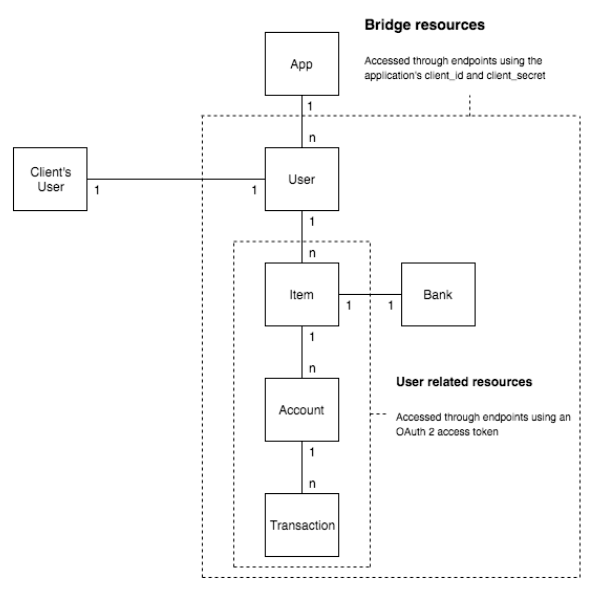Financial Data Aggregation
Overview:
Bridge is a Server-to-Server API that facilitates the aggregation of financial data. To effectively use our API, you need to map our entities to your data structure. We provide six main entities to represent various aspects of financial data.
- Users: Users are individuals who belong to your application (App).
Each User is represented as an abstraction of an end-user and is uniquely identified by auuid.
It's essential to link Users in your backend to your abstraction of a User or Client.
For more details, refer to the User resource by scrolling the responses. - Items: Items are associated with Users and represent the connection between an end-user and a specific bank.
Each Item corresponds to a set of bank credentials, facilitating secure access.
Explore the Item resource by scrolling the responses for in-depth information. - Accounts: Accounts are tied to Items and represent financial accounts, such as Checking Accounts.
For specific details, consult the Account resource by scrolling the responses. - Transactions: Transactions are linked to Accounts and represent financial transactions.
They provide granular data about financial activities.
For a comprehensive understanding, review the Transaction resource by scrolling the responses. - Stocks: Stocks are associated with Accounts and represent stock holdings.
This entity allows tracking of investment-related data.
Explore the Stock resource by scrolling the responses for detailed specifications.
The relational model of these resources is outlined as follows:

Updated 19 days ago
What’s Next
